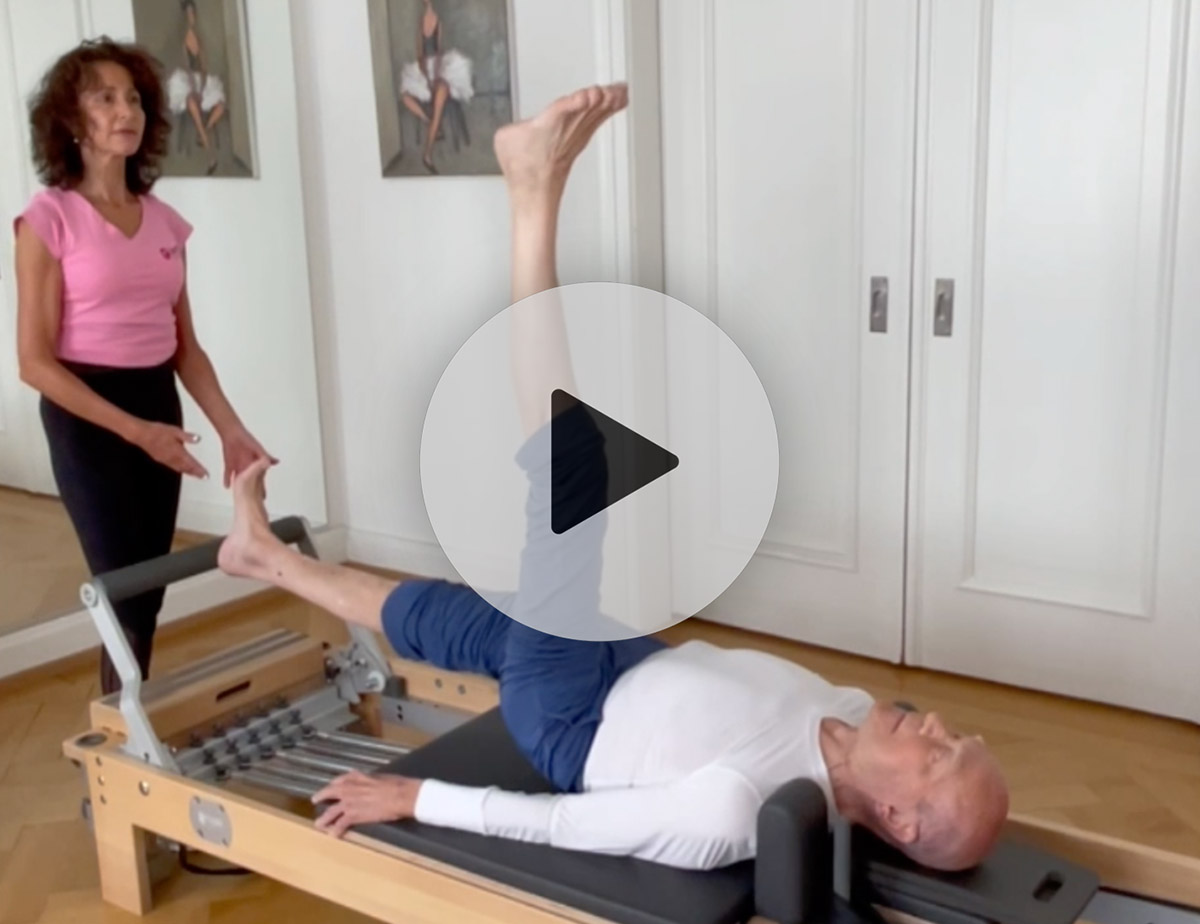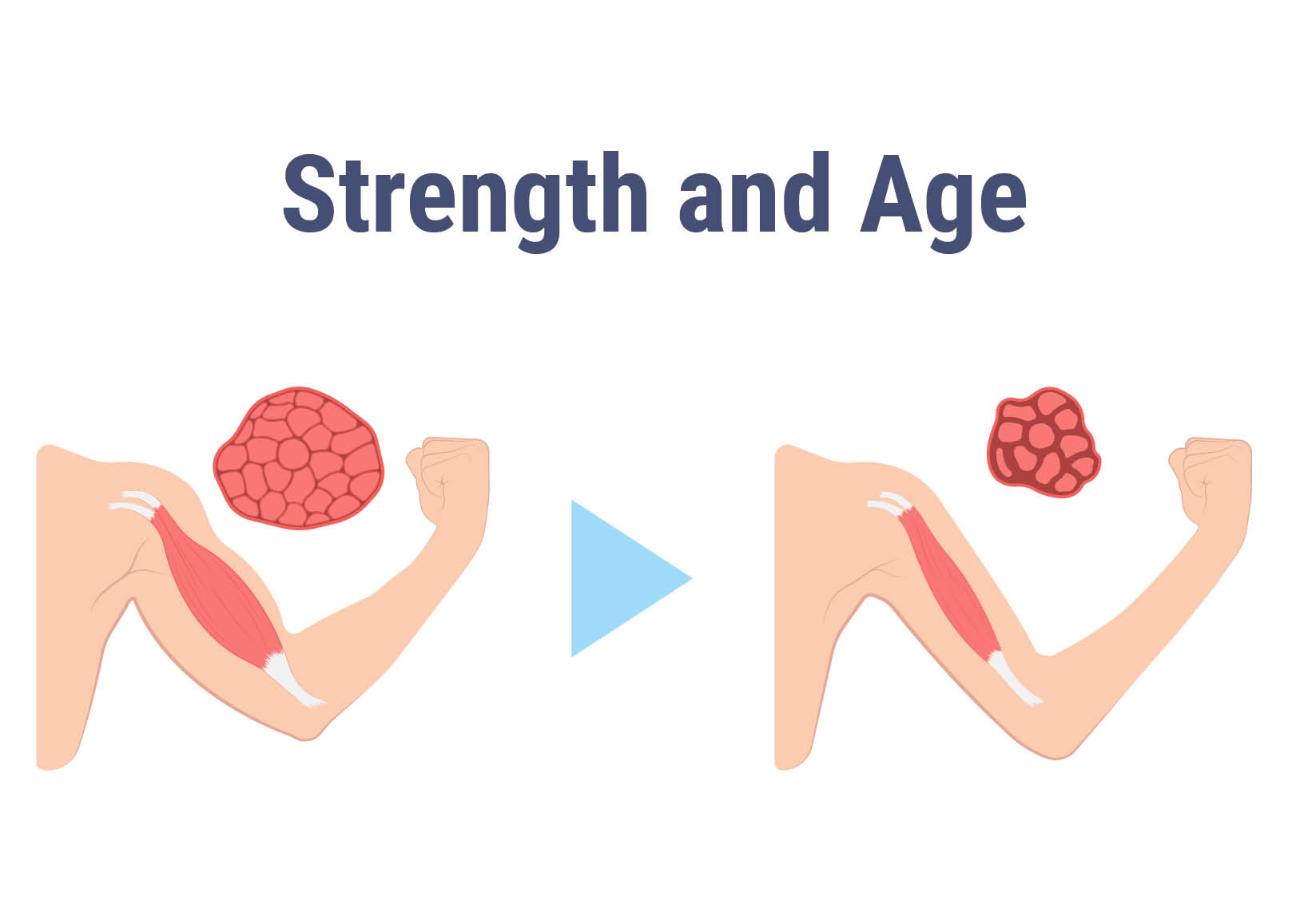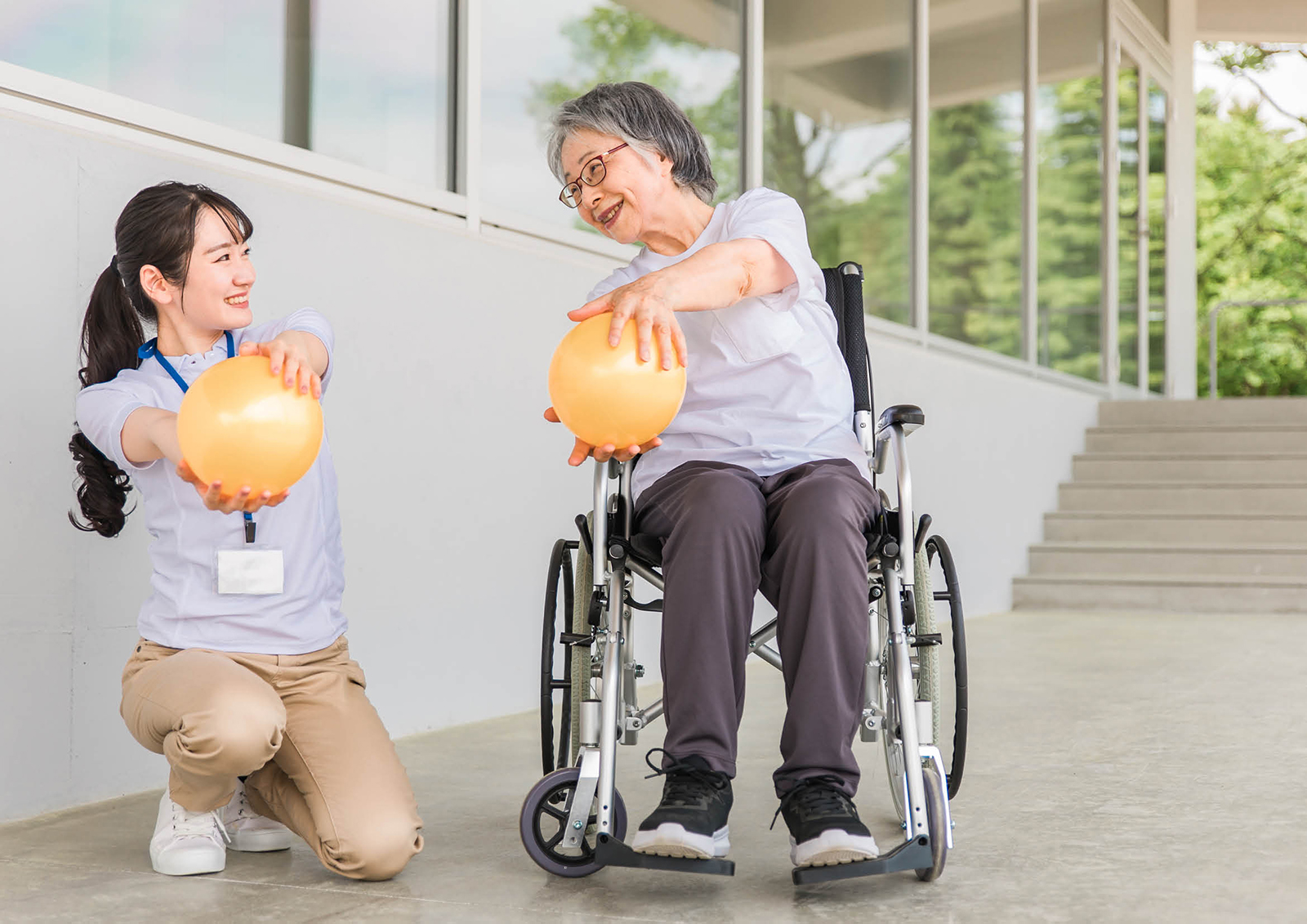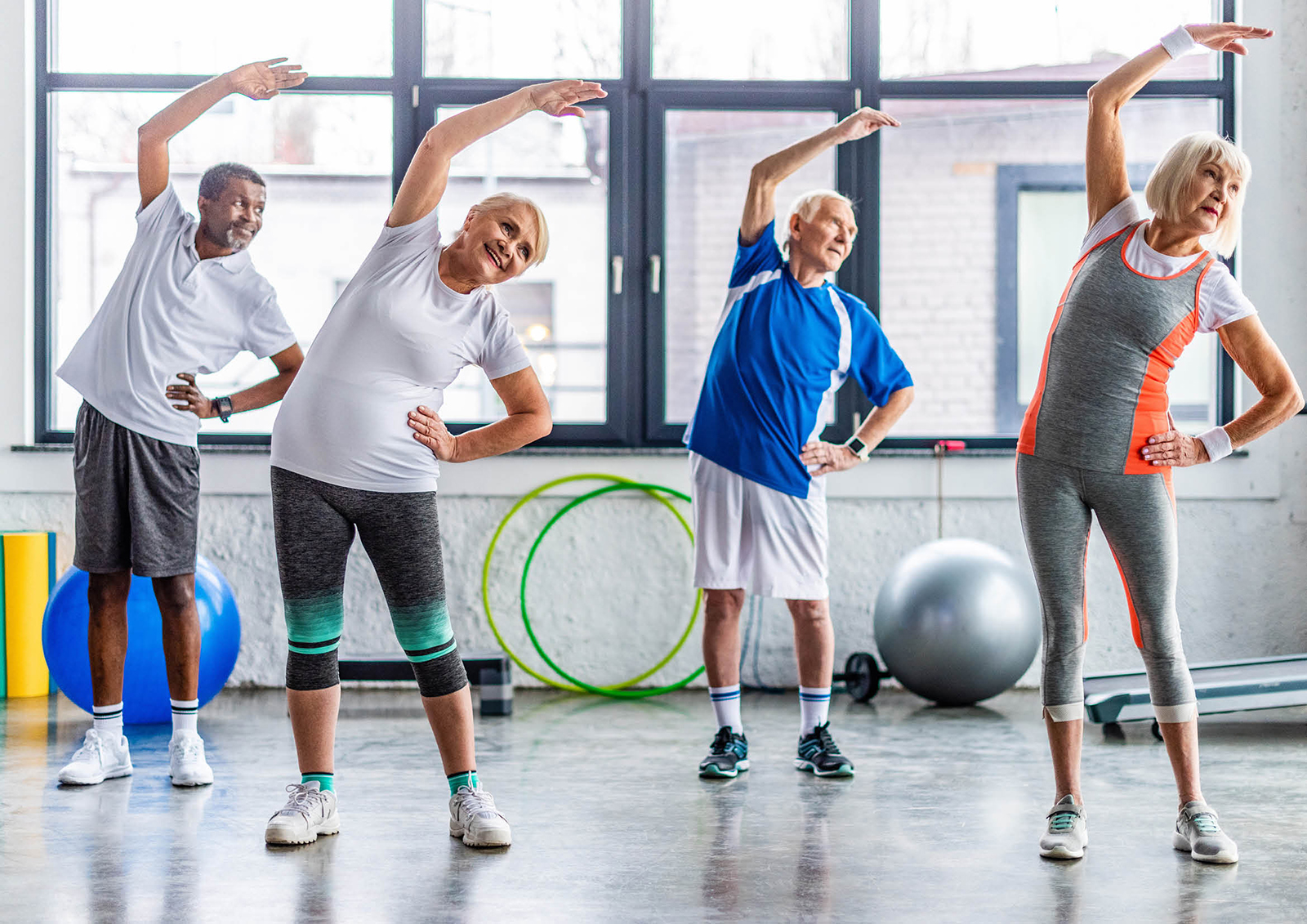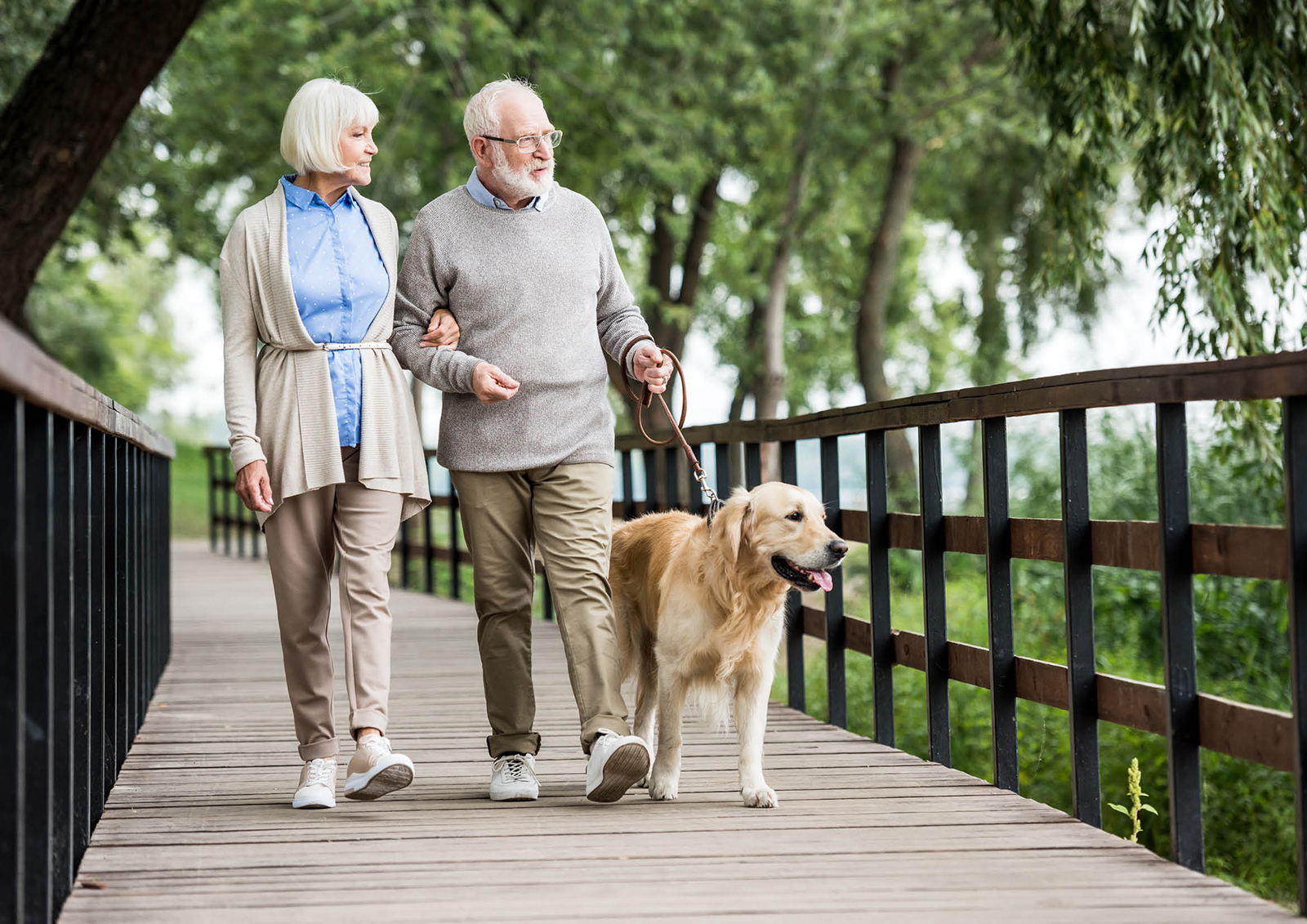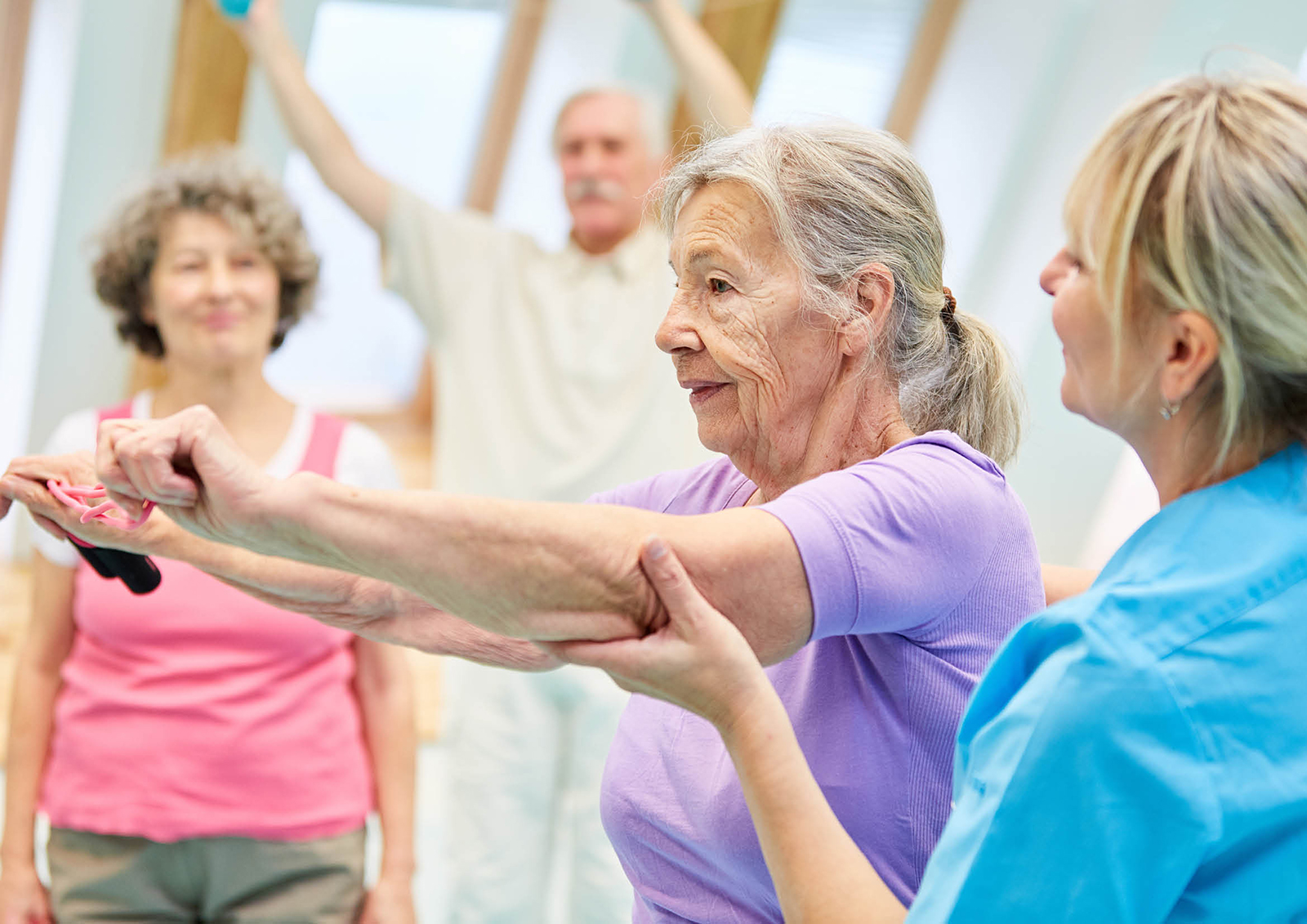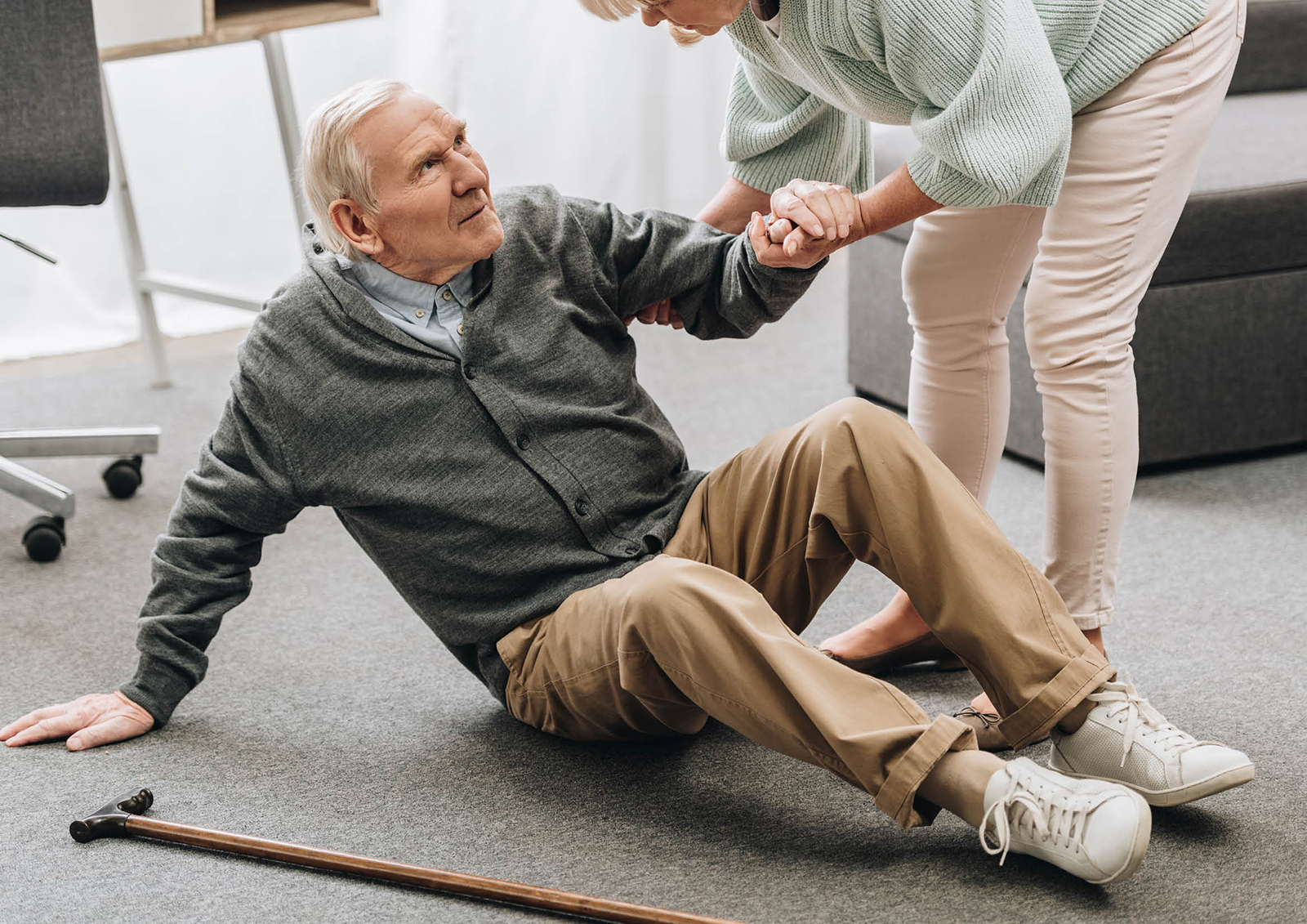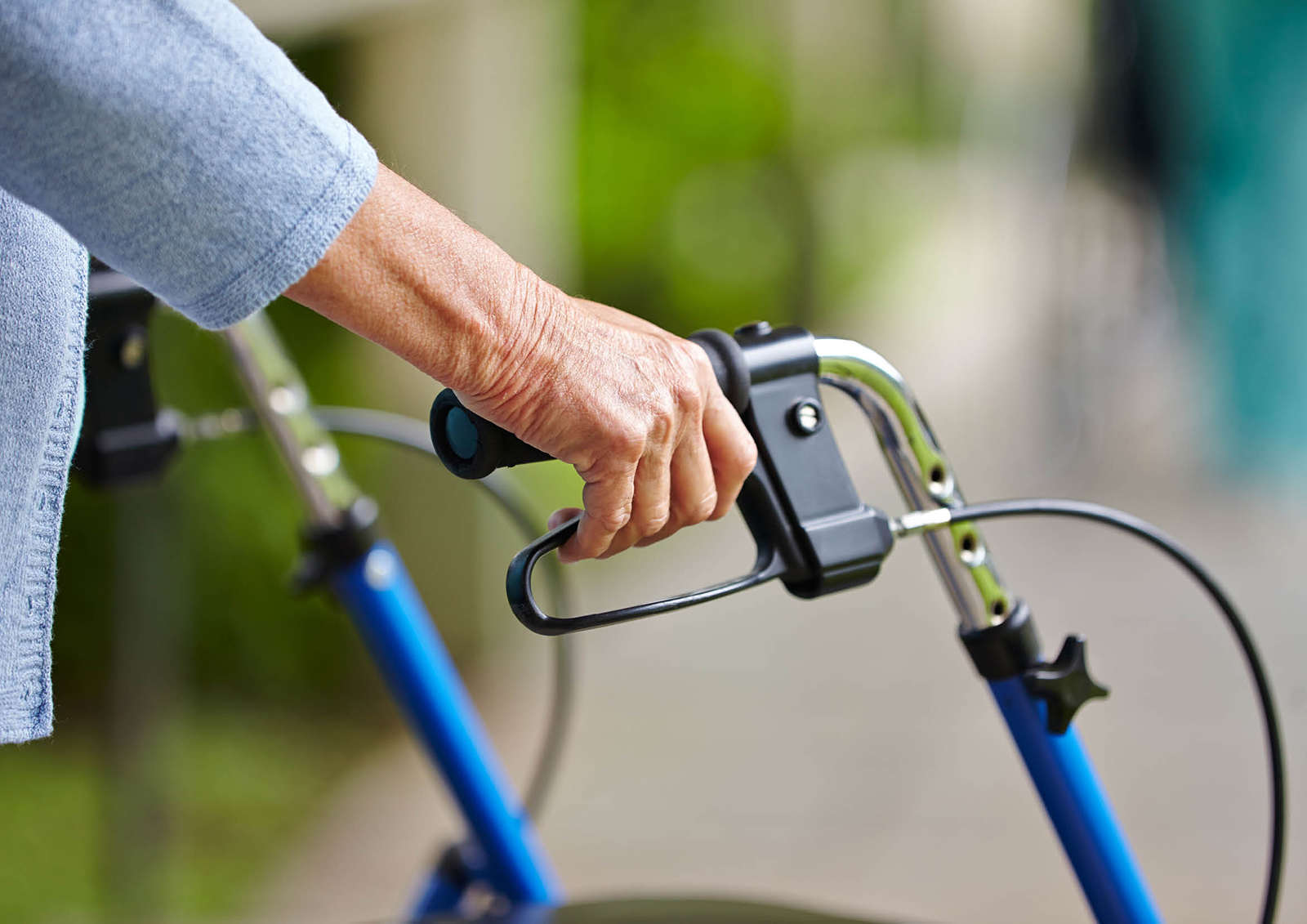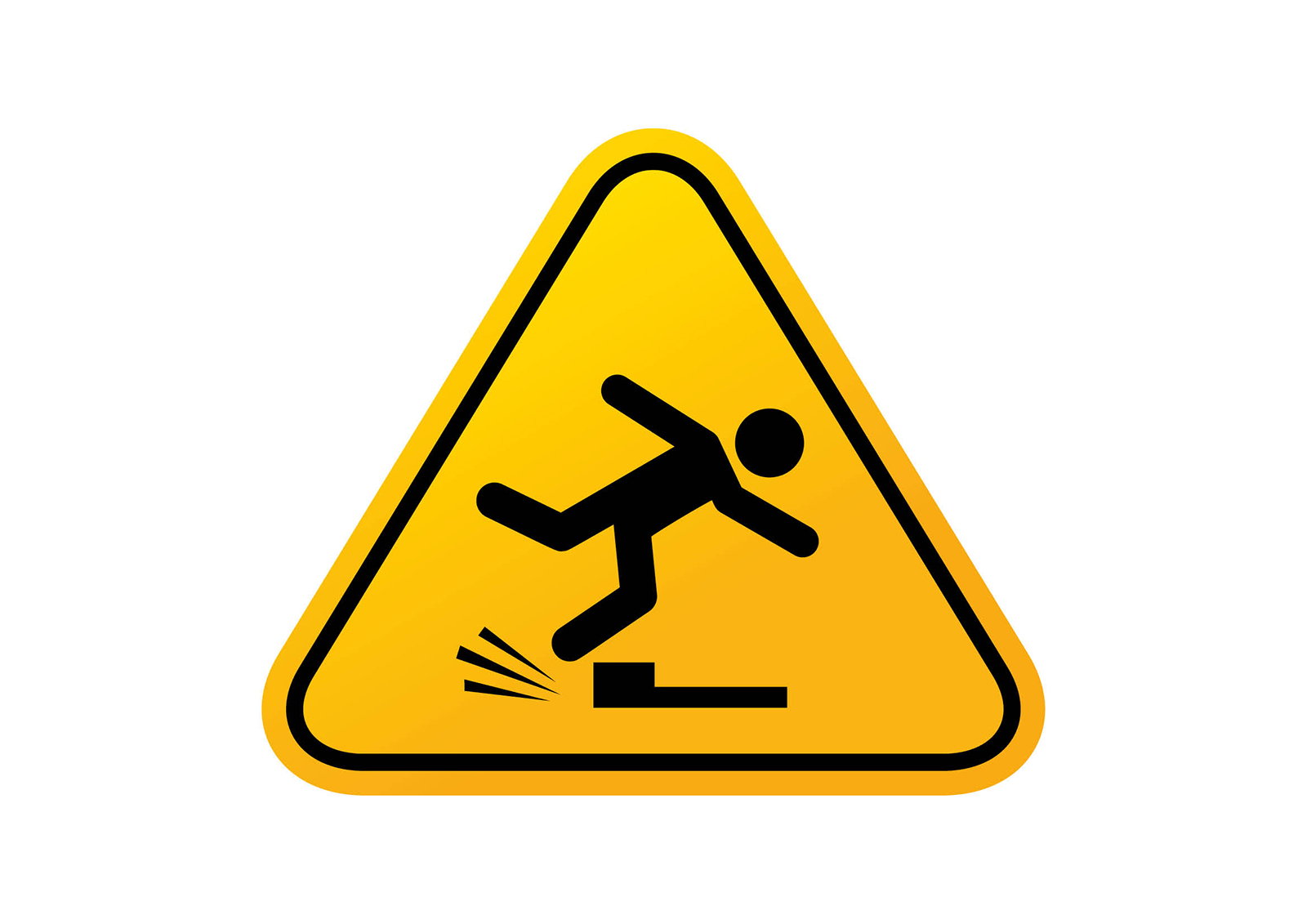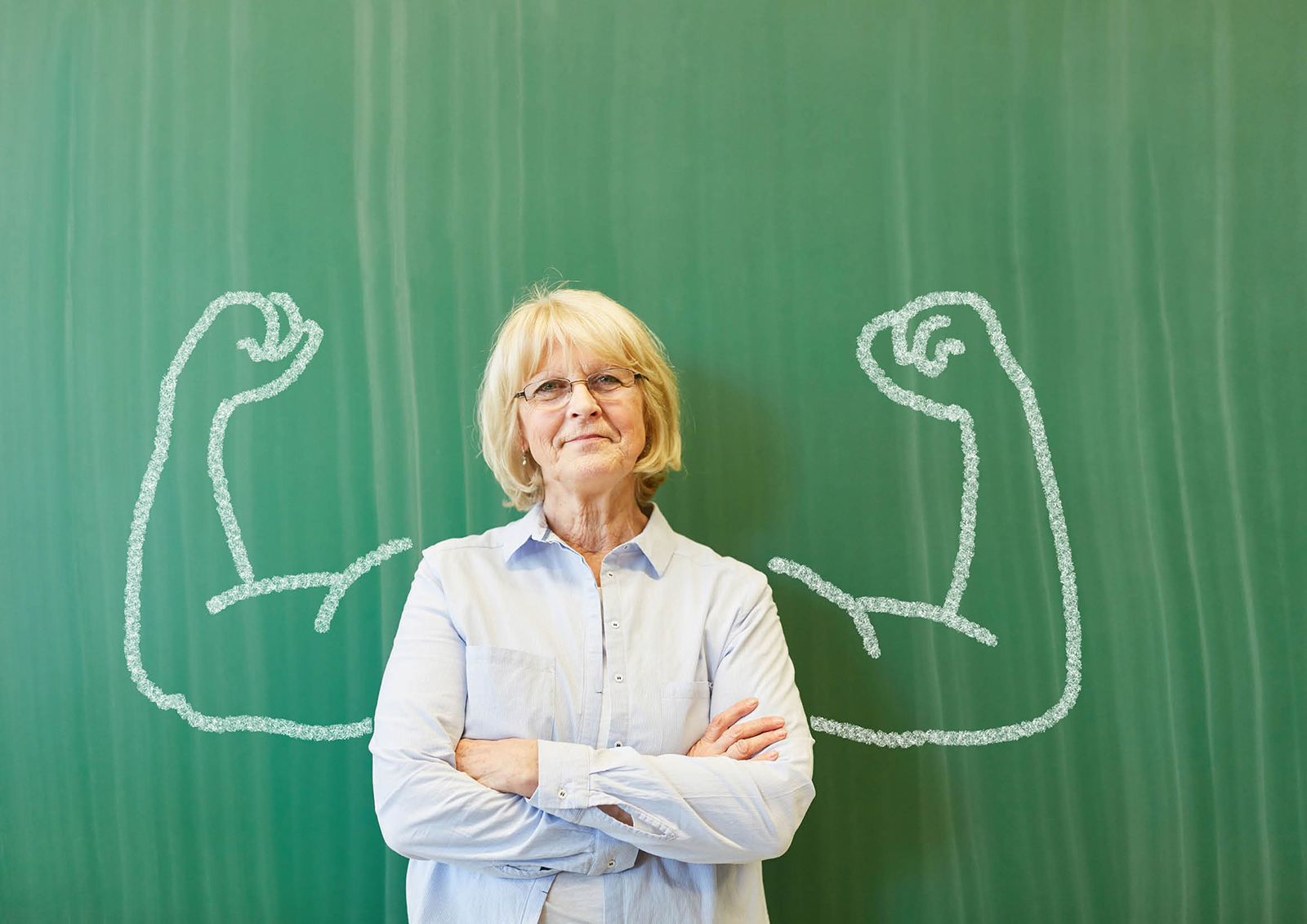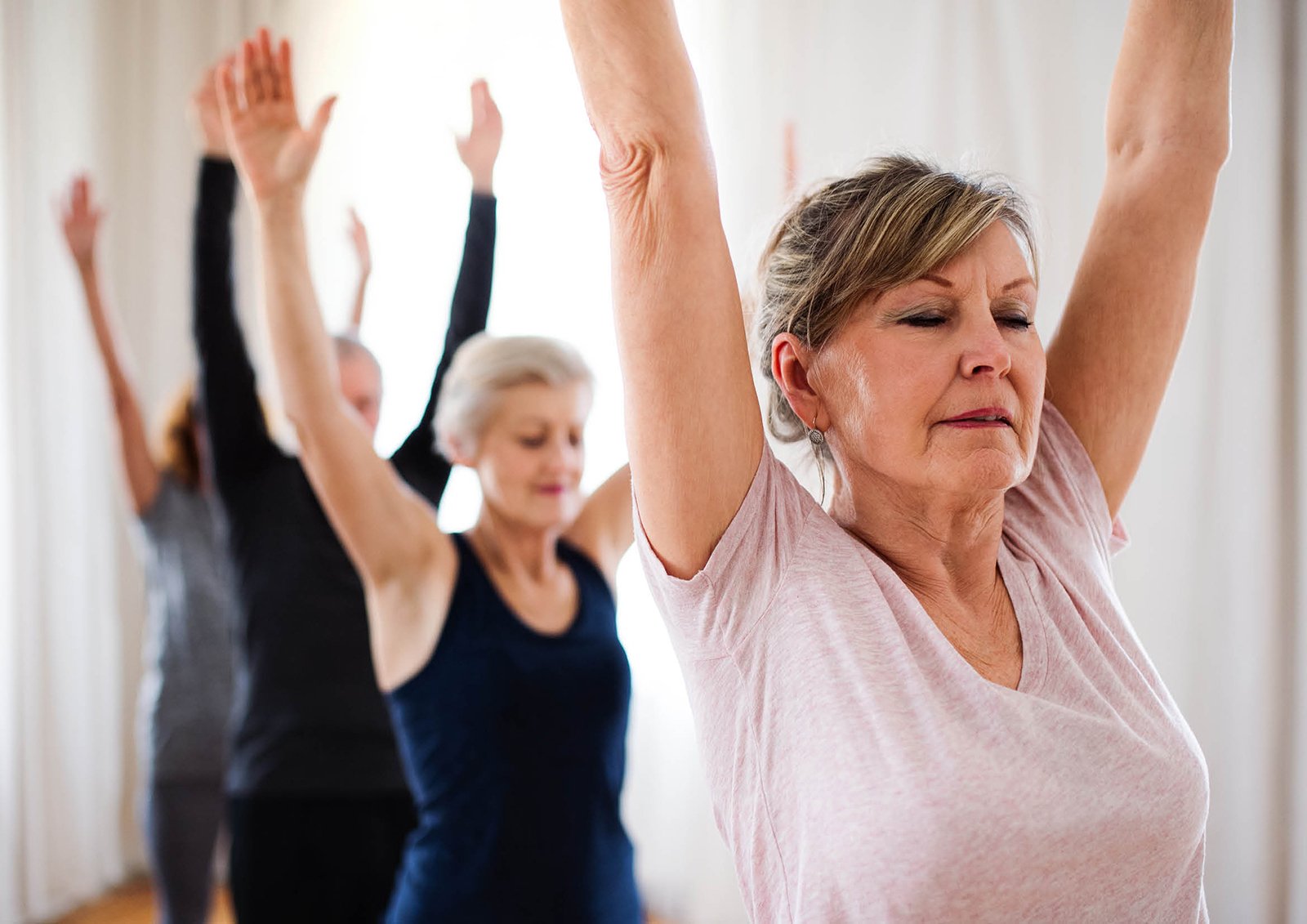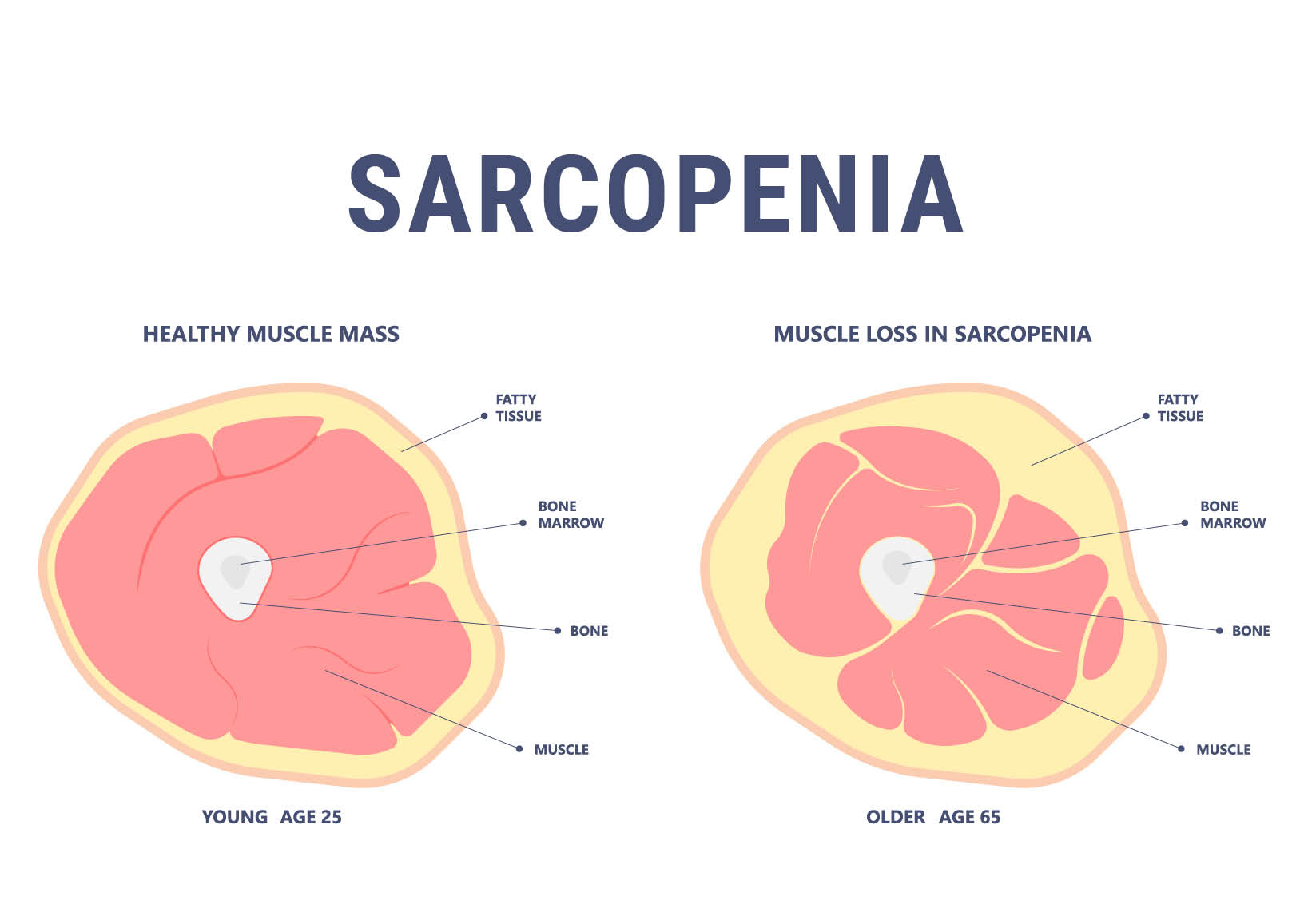Pilates for Seniors / 65+
Pilates for Seniors
Why is it so crucial and important to keep physically fit, especially as we age?
Muscles undergo physiological changes with the years. This process can be slowed or reversed through physical activity, effectively counteracting age-related reductions in function, as proven by a variety of scientific studies.
A well structured progressive resistance training program (PRT) has a positive effect on our aging muscular system and is effective against sarcopenia – age-related loss of muscle mass; dynapenia – age-related loss of muscle strength; and fall prevention.
Many older people find themselves in a vicious cycle due to structural changes in their musculature as they age. This can lead to a loss of muscle mass (age-related sarcopenia), resulting in a loss of muscle strength (age-related dynapenia), which in turn leads to inactivity and an unavoidable drop in both endurance and performance. The age-related reduction in sensory perception and associated insecurity which older individuals frequently experience serve to exacerbate this process further. Taken all together, the result can be a functional disorder such as unsteady gait and changes to motor skills.
Regular progressive resistance training and exercises to improve balance can reduce falls by 50%, not to mention the associated health care costs of 14 billion francs a year!
Engaging regularly in sports generates stem cells – responsible for repairing injuries – and mitochondria, the powerhouses of the cell, as well as positively influencing hormone levels.
Scientific studies have shown that regular physical exercise slows the reduction in brain mass, which in turn helps prevent age-related dementia.
The Federal Office of Public Health recommends 150 minutes of moderate physical exercise per week, or 75 minutes of intensive exercise, along with 30 minutes of regular activity during the day.
Sub-maximal elastic-resistance exercises and targeted dynamic balance exercises are recommended in particular to prevent falls by improving explosive strength – the high-speed power of the muscular system. After all, a muscle’s ability to respond quickly is vital in case of a fall.
Studies have proven that progressive resistance training (PRT) increases both muscle size and power. The more intense the PRT, the more effective it is. The gait is improved, speed and stride length increase, and the period of two-legged support necessary when climbing stairs is reduced. Targeted Pilates exercises optimize both static and dynamic posture, which in turn improves balance.
It’s never too late! The results of 12 years of lost muscle mass can be recovered in just 12 months, as various scientific studies have shown.
In other words, Pilates is beautifully suited to help increase muscle mass and improve balance, coordination, and motor skills. It is a holistic training system that involves both mind and body, a practical program that helps older people to move more easily in everyday situations and perform multiple tasks at the same time.
Senior Discount: 20%
Tel: +41 76 377 36 31
info@simaburgin.com
Studios Zürich City
Pilates Studio beim Paradeplatz
Beethovenstrasse 43
8002 Zürich
Pilates Studio in Selnau
Freigutstrasse 40
8001 Zürich
Mattentraining im „TROZ“
Ottikerstrasse 23
8006 Zürich
Photos: Willy A., 83 years old, and Regina S., 70 years old in Body Line Pilates Studio.
Video – Pilates training with our client Willy (84)
You would not believe that he is already 84 years old! Working with seniors requires deep knowledge about the human body and how to mobilise and build up muscles. Willy is training with us for several years now and his current condition is a huge improvement to when he first joined us. Together we were able to bring him to a very advanced level and his well-being improved a lot! No matter how fit or unfit you are or what your current age is, feel free to contact us for your individual fitness journey and discover what the BASI pilates method can do for you.
Your request / introductory lesson
Interesting Facts about Aging, Fitness and Pilates
(Translation is currently in progress…)
Breaking the vicious cycle of muscle degeneration
Reduced strength and endurance often lead to reduced activity. The results are muscle loss and functional problems, which lead to even less strength and stamina. This vicious cycle can be broken using a continuously adapted training program to increase muscle mass and strength.
Break this vicious cycle together with us, using Pilates!
WHO guidelines on physical activity for seniors (+ 64 years)
75 to 150 minutes of vigorous physical training or 150 to 300 minutes of moderate physical training or an equivalent combination throughout the week.
For additional health benefits: Muscle-strengthening activities at moderate or greater intensity that involve all major muscle groups at least 2 days per week. On at least 3 days per week varied multicomponent physical activity that emphasizes functional balance and strength of at least a moderate intensity.
source: WHO Guidelines on physical activity and sedentary behavior, 2020
300 minutes/150 minutes for additional health benefits
WHO guidelines for physical activity for seniors (+64 years): For additional health benefits, increase time spent in moderate physical activity to more than 300 min or time spent in vigorous physical activity to more than 150 minutes per week. Limit the amount of time spent being sedentary. Replace sedentary behavior with more physical activity of any intensity. Examples are walking to the store instead of driving, going for walks with children or grandchildren.
source: WHO Guidelines on physical activity and sedentary behavior, 2020
Outlook
Looking forward, we can say that it is never too late. Physical activity is an advantage at any age! According to the national advisory center for accident prevention (BMU), accidents in seniors cause overall economic damage of up to 14 billion Swiss Francs (BFU, 2011).
Potential savings for seniors through preventative measures:
The risk of falling in seniors could be reduced by 50% through combined strength and balance training. Up to 7 billion Swiss Francs could be saved through appropriate measurements.
source: Kraft und posturale Kontrolle im Altersverlauf, Zahnet, CAS PHC, 2021
Strength and balance training as preventative measures against the risk of falling in seniors
The top risk factors for falling are about to be changed. Strength and balance training are the most important preventative measures against muscle weakening and balance problems. These exercises can contribute to minimizing falls in seniors of 60 to 100+ years by 15% to 50%.
All these facts are considered in our training plans.
Falls cause negative effects such as pain and considerable costs.
Falling at an advanced age usually causes a loss of quality of life because mobility is limited. The affected person is scared of falling again and this affects their behavior. They spend less time out of the house, skip walks and limit their mobility more and more. This in turn compromises their ability to interact with others. Falling can lead to serious injury or even death. This places a heavy burden on the affected as well as on their social surroundings.
Prevention is key – we are happy to advise and assist.
source: Kraft und posturale Kontrolle im Altersverlauf, Zahnet, CAS PHC, 2021
Risk of falling when multitasking
According to research, the risk of falling rises 5,3-fold when performing more than one task at the same time, such as walking while performing another motoric or cognitive task.
Muscle mass and risk of falling
Falling is five times more likely if the muscles in the lower extremities are weak.
source: Kraft und posturale Kontrolle im Altersverlauf, Zahnet, CAS PHC, 2021
Factors increasing risk of falling in seniors
Problems with mobility and walking, a decrease in muscle strength, mental and cognitive impairments, dementia, fear of falling and depression are amongst the intrinsic health conditions found in elderly people. A fall can rarely be traced back to one single cause, it is usually the result of the concurrence of multiple events. The most prominent causes of falls are muscle weakness and balance problems.
source: Borde et al, 2015
PRT
Progressive Resistance Training
The aging process leads to physiological changes in the muscles. Physical activity can slow these changes down or stop them completely. This way, functional restrictions due to age can even be reverted. Sedentary behavior accelerates negative physiological changes. Our muscular system benefits from a well thought-out, progressive PRT (progressive resistance training) and helps prevent sarcopenia and dynapenia.
source: Kraft und posturale Kontrolle im Altersverlauf, Zahnet, CAS PHC, 2021
Why choose an individual training program?
Often, low-key strength training is recommended for seniors. Nevertheless, this is not sufficient for muscular adaption at an older age. When creating progressive, intensive PRT-programs, all training parameters as well as the individual’s general health must be taken into account. Professional supervision and careful introduction to the training program are important from the get-go.
WHO guidelines on physical activity for seniors (+ 64 years)
A certain amount of physical activity is preferable to inactivity. Physical activity can improve the health of older people who do not follow guidelines. Over time, the frequency, intensity, and duration of physical activity should be gradually increased. Seniors should exercise as much as their functional capacity allows and adjust the level of activity to their current overall fitness.
Immunosuppressant Rapamycin
Research on microorganisms at the Center for Molecular Life Sciences at Basel University
About one in three adults over the age of 80 suffers from serious sarcopenia, which severely limits a person’s mobility, independence and quality of life. Sarcopenia can be caused by a variety of factors, such as altered muscle metabolism or the loss of nerve cells stimulating the muscles.
With greater life expectancy, diseases associated with aging are also becoming more common.
Sarcopenia, unnaturally rapid loss of muscle mass in older people, is one of them. Scientists at the Center for Molecular Life Sciences at Basel University have now discovered that Rapamycin can partially prevent age-related muscle atrophy.
The study was published in “Nature Communications”.
Click here for further information
source: “Muskeln: Länger kraftvoll auch im Alter”, Prof. Dr. Markus Rüegg, Universität Basel, Biozentrum, 2020

